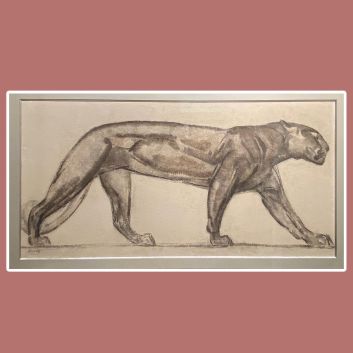Rating and value of works, paintings, drawings by Paul Jouve
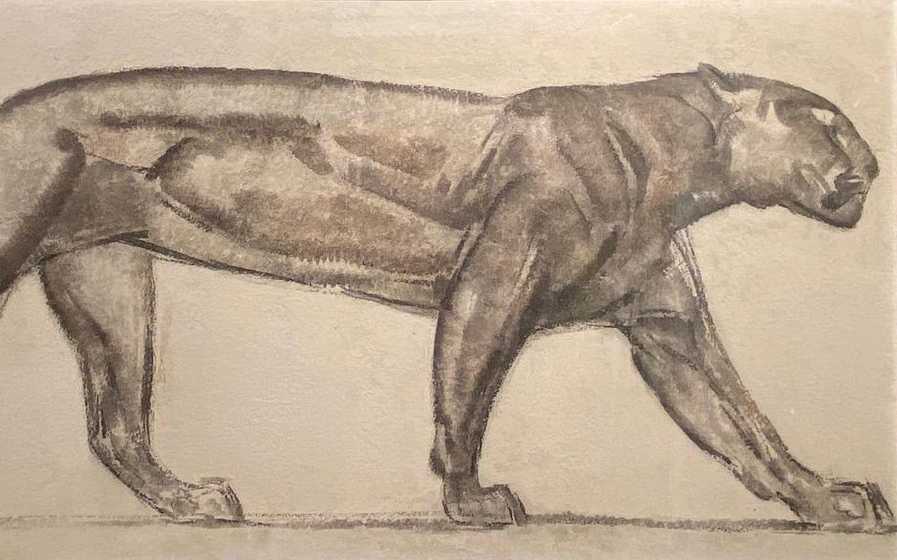
If you own a work by or after the artist Paul Jouve, and would like to know its value, our state-approved experts and auctioneers can offer you their expertise.
Our specialists will carry out a free appraisal of your work, and provide you with a precise estimate of its current market value.
Then, if you want to sell your work, we'll point you in the right direction to get the best possible price for it.
Artist's rating and value Paul Jouve
Paul Jouve is a twentieth-century wildlife painter. His works are mainly inspired by wild animals (panthers, lions, tigers...). His legacy includes paintings, watercolor drawings and prints.
At present, the prices of his works are rising under the auctioneers' gavels. His paintings are particularly prized by French buyers, and the price at which they sell on the art market ranges from €30 to €300,000, a considerable delta but one that speaks volumes about the value that can be attributed to Paul Jouve's works.
In 2014, his composition Prière au campement, depicting savannah animals, sold for €300,000, whereas it was estimated at between €30,000 and €40,000.
The artist's price is quite high, and varies according to the number of works on the auction market.
Order of value from a simple work to the most prestigious
Technique used | Results |
|---|---|
From €30 to €56,000 | |
Drawing - watercolor | From €120 to €84,000 |
Oil on canvas | From €80 to €300,000 |
Response in less than 24h
Jouve - The Jungle Book
Style and technique of the artist Paul Jouve
Paul Jouve's style is based on exceptional technical mastery, enabling him to capture the strength and nobility of animals with a rare intensity.
As an animal artist par excellence, he deploys an extremely precise drawing technique, marked by sharp contours and deep shading that accentuate the volume and musculature of his beloved wild animals.
Every stroke is designed to convey movement and energy, as if the animal were coming to life on paper. His rigorous observation, honed on his first visits to the Jardin des Plantes, is evident in every detail of his work: the textures of the fur, the radiance of the eyes, the tension of the bodies.
In sculpture, he approaches the material with the same attention to detail, carving powerful forms in majestic poses, reminiscent of the intensity of Bugatti's bronzes or Pompon's elegant stylization.
His work in metal and stone reveals a remarkable ability to convey the robustness and suppleness of animals, paying tribute to their natural grandeur.
Inspired by oriental techniques, Jouve pays particular attention to patinas and finishes, giving his pieces a radiance that captures the eye.
Through this precise, respectful approach to the animal, Paul Jouve turns each work into a celebration of wildlife, affirming his status as a key artist in twentieth-century wildlife art.
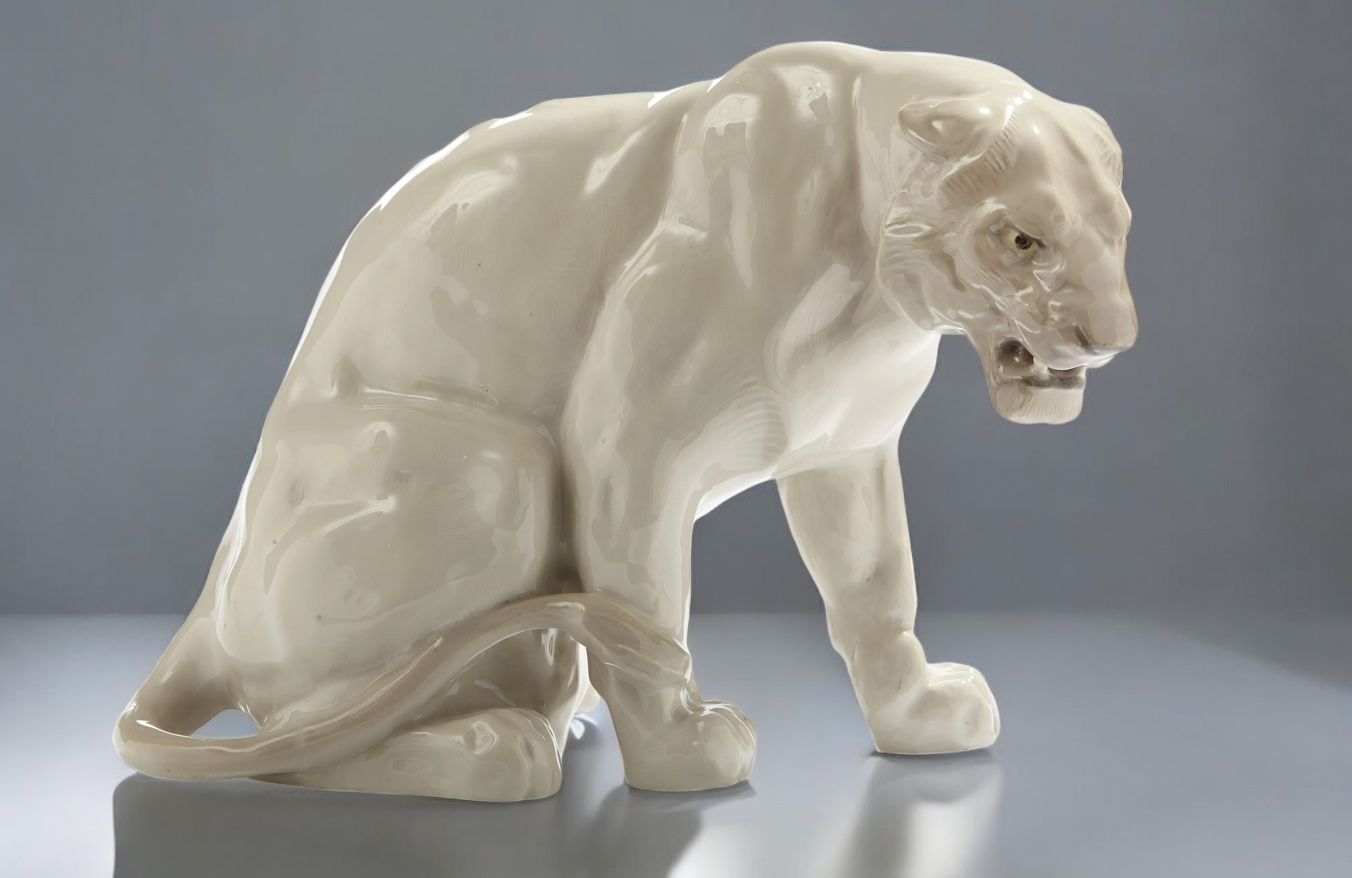
The career and life of Paul Jouve
Paul Jouve (1878-1973), a French artist with a remarkable career, established himself as a major figure in 20th-century animal art, alongside such talents as François Pompon and Rembrandt Bugatti.
Born in Seine-et-Marne, he was introduced to art at an early age by his father, Auguste Jouve, a painter and photographer, who encouraged his taste for drawing and observation.
This artistic family background led him to the École des Arts Décoratifs in Paris, where he cultivated a fascination for animals, which he studied assiduously at the Jardin des Plantes, capturing their power and elegance in his sketches.
Like Bugatti, who translated the vitality of wild animals into bronze, Jouve sublimates felines, rendering them almost mystical in his works.
His relationship with Orientalist painters, who like him were fascinated by the exoticism and grandeur of distant landscapes, developed rapidly. By 1893, he was exhibiting at the Salon des artistes français, a decisive step in his career.
This success enabled him to take up residence with Léon Cauvy in Algiers, where he married the daughter of Maxime Noiré, an influential painter in the Orientalist movement.
There, he perfected his eye for big cats, as Pompon would do with bears and deer in his own stylized approach.
Jouve's career took a turning point with his illustration project for The Jungle Book, where he succeeded in capturing the wild spirit of the animals with a rare intensity. This project, one of the most emblematic of his career, places him alongside the masters of animal illustration.
His mastery of detail and ability to imbue his figures with a striking presence earned him worldwide recognition. Throughout his career, he received three gold medals at renowned Paris exhibitions, consolidating his place in the art world.
In 1931, he exhibited his work at the Exposition Coloniale Internationale, where his canvases were particularly admired for their vibrant exoticism.
Always in search of adventure and new inspiration, he travels to the Hoggar massif, in the heart of the Sahara, to study animals in their natural habitat.
In Paris, he collaborated with artists such asÉdouard-Marcel Sandoz and Gaston Suissewith whom he shared a passion for depicting wildlife in a noble and expressive light.
Sandoz, a specialist in stylized geometric forms, found an artistic ally in Jouve, both of whom paid tribute to the animal kingdom with a refined yet emotionally charged approach.
To the end of his life, Jouve remained faithful to his passion for animals, an artistic commitment that earned him lasting recognition. He died in Paris at the age of 95, leaving an indelible mark on twentieth-century animal art.
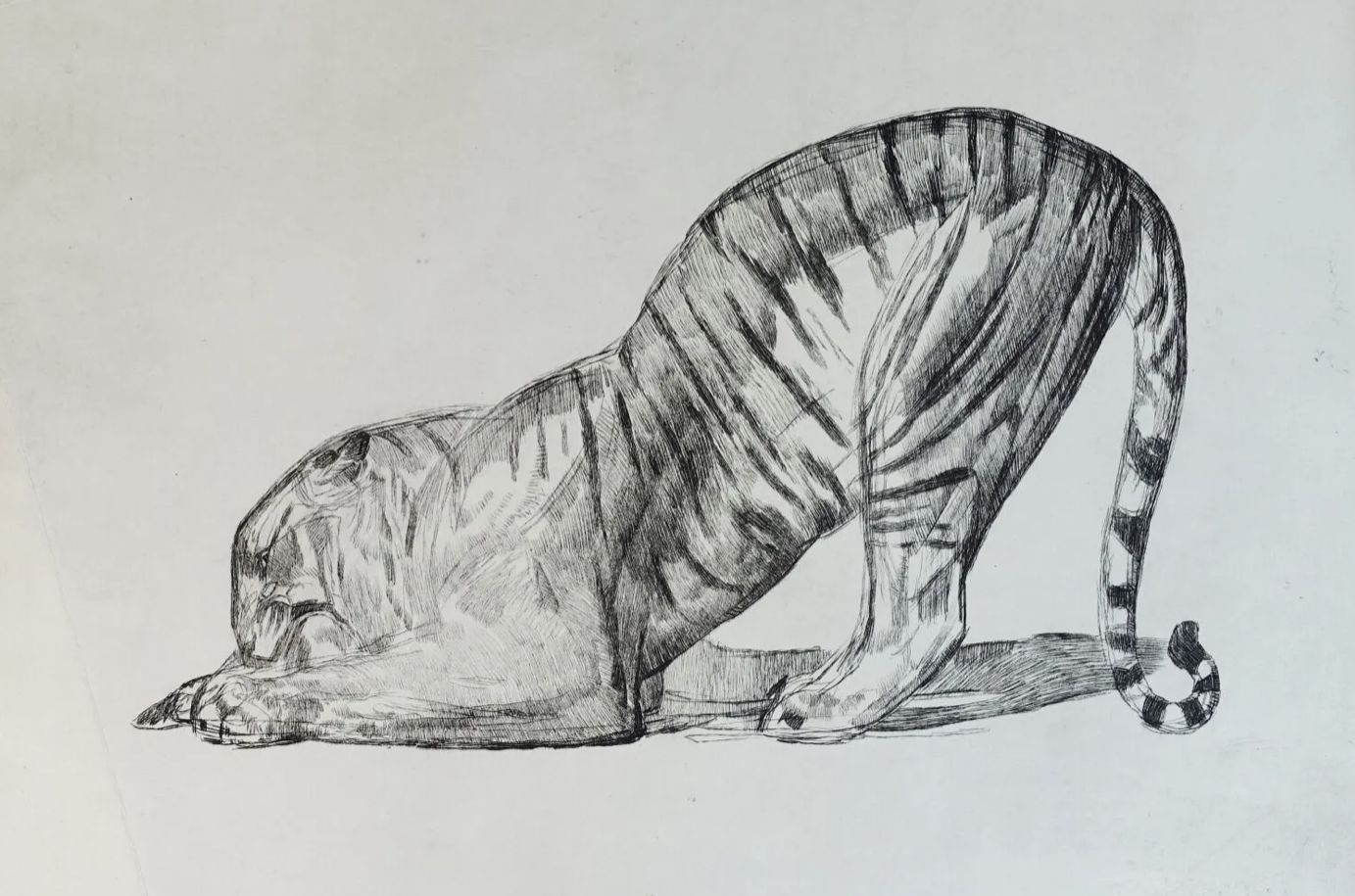
Focus on a drawing, Crouching Tiger, (above), Paul Jouve
This drawing by Paul Jouve reveals the artist's technical mastery and sensitivity to the animal world. It shows a crouching tiger, concentrated and serene, its front legs bent, its head lowered almost as a sign of submission or intense rest.
The particular position of the animal, unusual in the representation of fawns, conveys a mixture of restrained power and gentleness, a subtle balance that only Jouve could capture with such precision.
Here we feel a deep respect for the animal, which the artist perceives and renders in all its natural nobility.
The line work is impressive. Jouve uses precise yet subtle lines to sculpt the tiger's form, playing with the thickness and direction of the strokes to suggest the volume and texture of its striped coat.
The stripes, typical of this species, are more than just decorative; they embrace the animal's powerful musculature, revealing a detailed and perfectly mastered anatomy.
Each line seems to have been drawn with precise intention, accentuating the curvature of the muscles and the suppleness of the legs. Particularly noteworthy is the care taken with the shading, which lends depth and a sculptural dimension to this two-dimensional drawing.
The tiger's tail, slightly raised, adds a touch of dynamism to the composition. It balances the crouching position of the feline, and its curled tip breaks the potential rigidity of the whole.
With apparent minimalism, Jouve manages to express all the animal's character: grace, power and a certain melancholy.
The choice of this almost contemplative pose contrasts with the usual depictions of wild beasts in motion, hunting or in action, preferred by the animal artists of his time.
Here, Jouve offers us a moment of calm, a suspended moment that invites respectful contemplation.
This drawing also bears witness to the influence of Oriental art on Jouve, particularly in the way he simplified and stylized forms without ever losing sight of verisimilitude.
Through this work, Jouve conveys his admiration for wild animals and his talent for capturing their essence without artifice.
This crouching tiger thus becomes much more than a simple study of wildlife: it stands out as a veritable ode to majesty and wild beauty, where every stroke exudes passion and mastery.
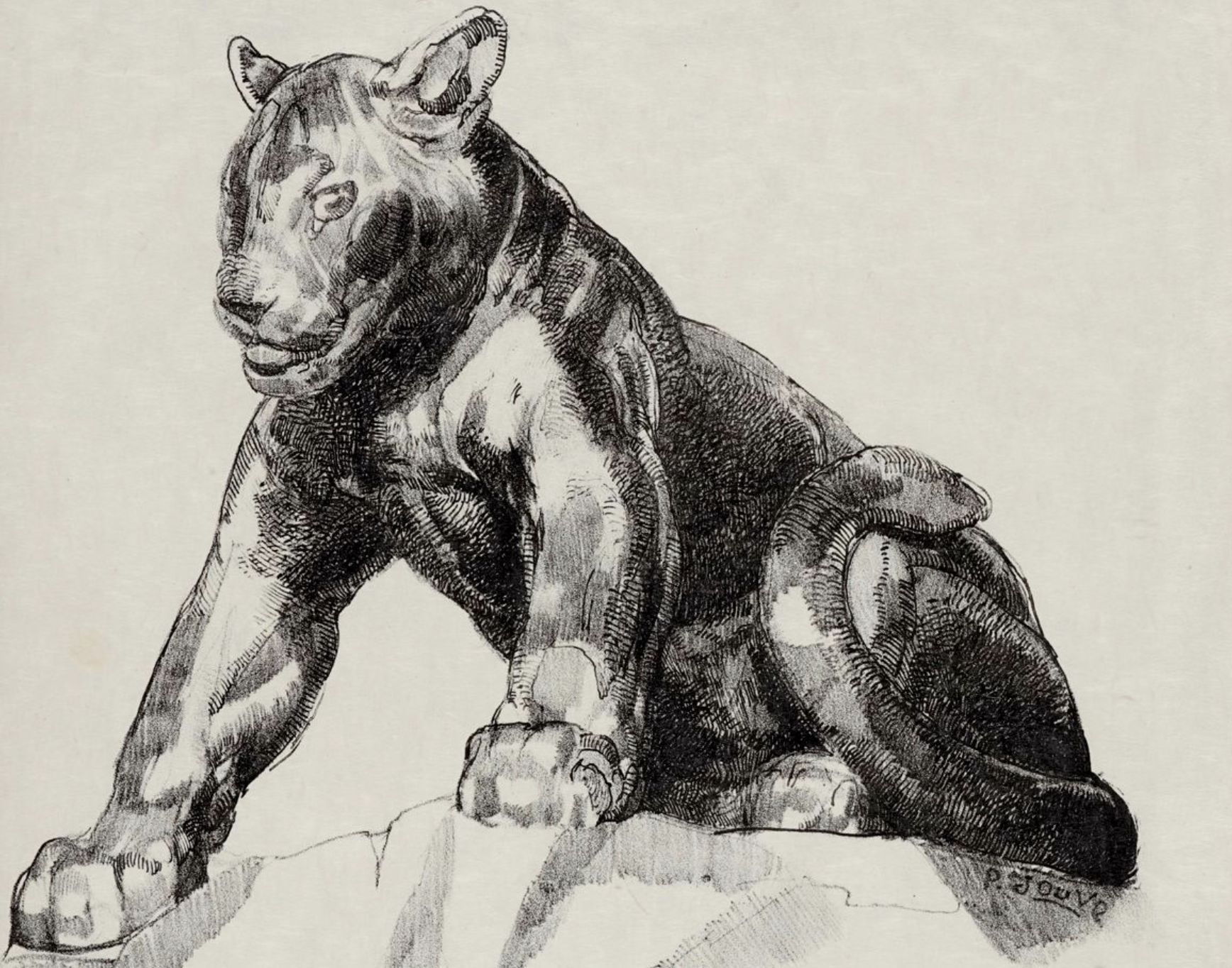
Paul Jouve's legacy
Paul Jouve's legacy remains vibrant and imposing, symbolizing the excellence of twentieth-century animal art.
By reinventing the depiction of fauves and other exotic creatures, he left an indelible mark on French art, inspiring generations of artists fascinated by the power of wildlife.
His influence can be seen not only in the precision of his line and the majesty of his sculptures, but also in his respectful, almost spiritual approach to the animal, which he considered a noble subject.
Even today, Jouve's works are prized by collectors and exhibited in prestigious museums, where they captivate with their intensity and refinement.
This master of drawing and sculpture, who combined rigorous technique with profound sensitivity, continues to influence modern animal art and remains an essential reference for contemporary artists and enthusiasts alike.
Paul Jouve's unrivalled work has given animal art a dignity and depth that transcend the ages.
Recognizing Paul Jouve's signature
In most cases, Paul Jouve signs his works at the bottom of the canvas in a color that contrasts with the background. Occasionally, his works go unsigned.

Knowing the value of a work
If you happen to own a work by or after Paul Jouve, don't hesitate to request a free appraisal by filling in our form on the Auctie's website. A member of our team of state-approved experts and auctioneers will contact you promptly to provide you with an estimate of the market value of your work, as well as historical information about it. If you wish to sell your work of art, our specialists will also be on hand to help you sell it at the best possible price, taking into account market trends.
Response in less than 24h
Related topics
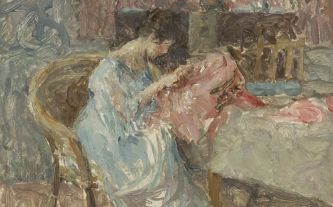
Rating and value of works, drawings, paintings by Emile Bogg...
Emile Boggio is a Franco-Argentinian Impressionist painter who produced drawings and paintings that are highly prized at auction. Estimated in 24h.
Read more >
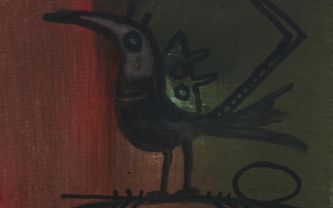
2024 quotation and value of paintings, drawings, sculptures by Wif...
Wifredo Lam is a Cuban surrealist artist whose works are highly valued on the auction market. Estimated in 24h.
Read more >

Rating and value 2024 of paintings by Mary...
Mary Cassatt is an American Impressionist artist of the 20th century, whose works are highly prized at auction.
Read more >
Secure site, anonymity preserved
State-approved auctioneer and expert
Free, certified estimates
